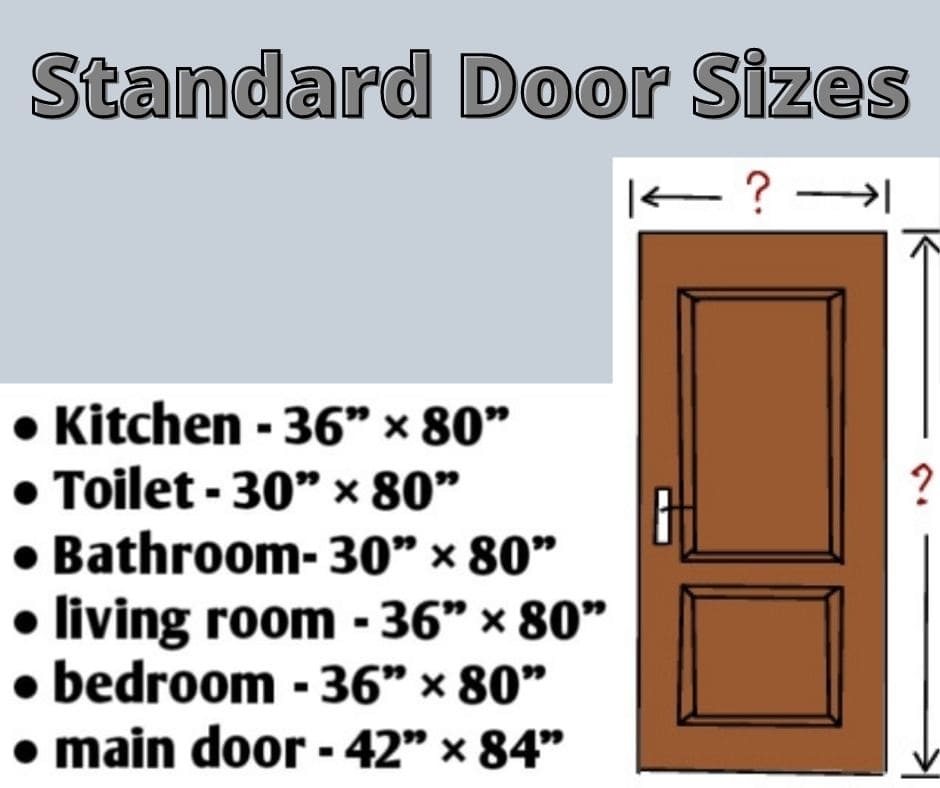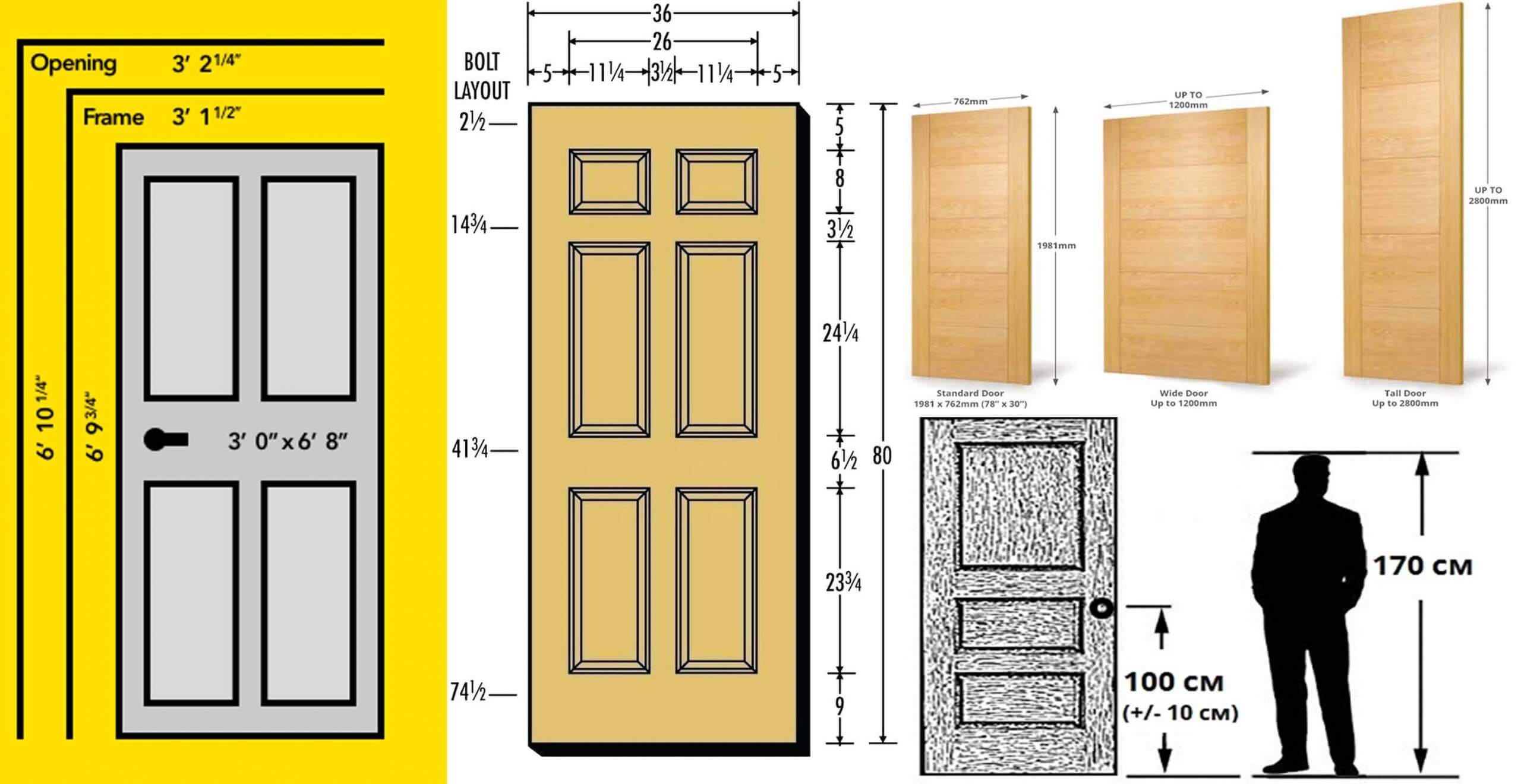Standard Bathroom Door Widths: Width Of A Bathroom Door

The width of a bathroom door is an important consideration in home design, impacting accessibility, functionality, and aesthetics. Standard widths have evolved over time to accommodate different needs and preferences, ensuring both ease of movement and efficient use of space.
Standard Bathroom Door Widths
A table summarizing common bathroom door widths is provided below:
| Door Type | Standard Width | Common Variations |
|---|---|---|
| Single Door | 30 inches (76.2 cm) | 28 inches (71.1 cm), 32 inches (81.3 cm) |
| Double Door | 60 inches (152.4 cm) | 58 inches (147.3 cm), 62 inches (157.5 cm) |
| Pocket Door | 24 inches (61 cm) | 22 inches (55.9 cm), 26 inches (66 cm) |
Rationale Behind Standard Widths
Standard bathroom door widths are determined by a combination of factors:
* Accessibility: Wider doors provide easier access for people with mobility impairments, ensuring comfortable passage with wheelchairs or walkers.
* Ease of Movement: A minimum width allows for convenient entry and exit, preventing obstructions or tight squeezes, particularly when carrying items.
* Furniture Placement: Standard widths accommodate the placement of furniture, such as vanities or toilets, without hindering door functionality.
Comparison with Other Door Types
Bathroom doors are typically narrower than other doors in the house, such as bedroom or kitchen doors, which often measure 32 inches (81.3 cm) or 36 inches (91.4 cm) for single doors. This difference is attributed to the smaller size and functionality of bathrooms, where space optimization is crucial.
The standard width of a bathroom door should be considered in conjunction with the overall design of the bathroom, ensuring sufficient space for movement and accessibility.
Factors Influencing Bathroom Door Width

The ideal width of a bathroom door is not just about aesthetics; it’s about functionality, safety, and accessibility. Several factors play a crucial role in determining the optimal door width for your bathroom.
Width of a bathroom door – Bathroom size, layout, and intended use significantly influence the choice of door width. A smaller bathroom might benefit from a narrower door to maximize space, while a larger bathroom might require a wider door for easier access, especially when moving furniture or carrying large items. Similarly, the intended use of the bathroom, such as for a single person or a family, will influence the required door width.
Bathroom Size and Layout
The size and layout of your bathroom are primary factors in determining the ideal door width. A compact bathroom might necessitate a narrower door to maximize available space. Conversely, a larger bathroom may benefit from a wider door for easier access and movement.
- Narrow Bathroom Layout: In a narrow bathroom, a standard 30-inch door might feel cramped, especially when carrying items. A narrower door, around 24-26 inches, can help maximize space while still providing adequate access.
- Wide Bathroom Layout: A wider bathroom, on the other hand, might benefit from a 32-inch or even 36-inch door, offering more space for maneuvering and accommodating larger items.
Challenges and Solutions for Narrow Doorways
Narrow doorways in bathrooms can pose challenges, especially when trying to move furniture or accommodate accessibility needs. However, several solutions can mitigate these issues.
- Swinging Door: A standard swinging door might be challenging in a narrow bathroom, as it requires space to swing open fully. Consider using a sliding door, a pocket door, or a bifold door to maximize space.
- Furniture Placement: Strategically place furniture to avoid obstructing the doorway. Consider using smaller or space-saving furniture pieces to optimize the available space.
- Mirrors: Using mirrors strategically can create the illusion of more space, making a narrow bathroom feel less cramped.
Obstacles and Considerations
Several obstacles and considerations must be taken into account when choosing the appropriate bathroom door width.
- Wheelchair Accessibility: For wheelchair accessibility, a minimum door width of 32 inches is recommended, allowing for easy maneuvering and turning. A wider door, around 36 inches, is even better, providing ample space for wheelchair users.
- Large Furniture: If you plan to move large furniture pieces into the bathroom, such as a large vanity or a bathtub, a wider door is essential for easy transportation.
- Multiple People: If multiple people will be using the bathroom simultaneously, a wider door can facilitate easier movement and prevent congestion.
- Safety: A wider door can provide better access in case of an emergency, allowing for easier evacuation or entry for assistance.
Bathroom Door Width Considerations for Accessibility

Ensuring accessibility in bathrooms is crucial for creating inclusive spaces for everyone. One key element of accessibility is the width of the bathroom door. A properly sized door allows individuals with disabilities, including those using wheelchairs, walkers, or mobility aids, to navigate the bathroom comfortably and independently.
Minimum Door Widths for Accessibility, Width of a bathroom door
Accessibility guidelines provide specific recommendations for minimum door widths to accommodate individuals with disabilities. These guidelines ensure that doors are wide enough to allow for easy passage with mobility aids and provide sufficient clearance for maneuvering.
| Accessibility Guideline | Minimum Door Width |
|---|---|
| ADA (Americans with Disabilities Act) | 32 inches (81.3 cm) |
| IBC (International Building Code) | 32 inches (81.3 cm) |
| ANSI (American National Standards Institute) | 32 inches (81.3 cm) |
Door Clearance Beyond Width
Beyond the width of the door, several other factors contribute to accessibility, ensuring individuals with disabilities can easily enter and exit the bathroom.
- Swing Direction: The direction the door swings is crucial. Doors that swing inward can obstruct wheelchair access, especially if the bathroom is small. Outward-swinging doors provide more space and are generally preferred for accessibility.
- Handle Placement: The location of the door handle should be accessible to individuals using wheelchairs. Handles placed at a height between 34 and 48 inches are ideal. Lever-style handles are easier to use than knobs, especially for individuals with limited hand mobility.
- Clearance Around the Door: There should be adequate clearance around the door to allow for wheelchair maneuvering. The minimum recommended clearance is 60 inches (152.4 cm) in front of the door and 36 inches (91.4 cm) on the side.
Planning a bathroom remodel? Make sure your door is wide enough to fit everything! You’ll need plenty of space for that stunning lowes navy blue bathroom vanity you’ve been eyeing, plus all your toiletries and towels. A standard door width should do the trick, but measure twice and cut once, just to be safe!
Nah, kalau bicara soal pintu kamar mandi, ukuran lebarnya memang penting, kan? Tapi, jangan lupa soal pengamannya juga! Kalau kamu butuh kunci pintu yang praktis dan aman, coba deh cek push pin bathroom door lock. Gampang dipasang, dan tetap bisa menjaga privasi di kamar mandi.
Jadi, pintu kamar mandimu bisa lebar, tapi tetap aman dan nyaman, ya!